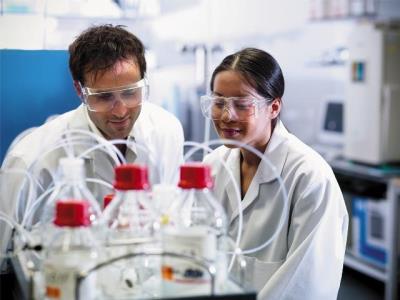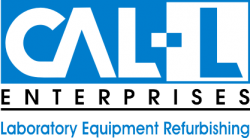 As a mass spectrometrist who has migrated into the realm of clinical chemistry, I frequently tell my clinical chemistry colleagues that mass spectrometrists want to take over the world. Although an exaggeration, this statement is seldom challenged, probably in recognition of the many positive ways that mass spectrometry already has
As a mass spectrometrist who has migrated into the realm of clinical chemistry, I frequently tell my clinical chemistry colleagues that mass spectrometrists want to take over the world. Although an exaggeration, this statement is seldom challenged, probably in recognition of the many positive ways that mass spectrometry already has
influenced the clinical laboratory and the practice of medicine, with the number of new applications growing rapidly. But before looking to the future of clinical mass spectrometry, it is useful first to consider briefly the historical context of mass spectrometry in the clinical lab.
Small Molecules, Big Results
In what I consider the Neolithic Age of clinical mass spectrometry, there were relatively few applications, many of them toxicology assays using gas chromatography-mass spectrometry (GC-MS). However, the field really began to flower when it entered its own Bronze Age, about a decade to 15 years ago, as the large clinical laboratories began to adopt liquid chromatography-tandem mass spectrometry (LC-MS/MS), primarily using reverse phase LC at conventional flow rates and triple quadrupole tandem mass spectrometers. The targeted analytes were almost invariably small molecules, and there were inter-related drivers for adoption. In some cases, such as the immunosuppressant sirolimus, no approved immunoassay was available, so laboratories turned to other technologies, such as LC-MS/MS.
Clinical chemists soon began developing multi-analyte panels using a single method, such as immunosuppressant panels and steroid panels. Perhaps the most notable early examples of multi-analyte methods are tandem mass spectrometry methods for acyl carnitines and amino acids for expanded newborn screening. Unlike most of the tandem mass spectrometry-based methods for the clinical lab, these expanded newborn screening applications typically use flow-injection with no chromatographic separation and are semi-quantitative or qualitative in nature.
Cost reduction also has driven adoption of mass spectrometry. The experience in our laboratory, however, is that this sometimes is an illusory goal. For example, most mass spectrometry methods require labor-intensive—and hence costly—sample preparation. Other factors include limited sample counts over which to amortize fixed expenses, and the fact that expertise for maintenance and assay development may be in short supply. These factors disproportionately affect smaller labs. However, even at a smaller lab it can be cost-effective to bring a mass spectrometry-based assay in-house to avoid send out costs.
The shift to mass spectrometry is often justifiable by factors other than cost savings, such as improved assay quality. This boost in quality is exemplified by testosterone. It became evident that traditional immunoassays were unreliable for measuring testosterone in patients with low endogenous concentrations, such as in women and children. The greater specificity of LC-MS/MS enabled specimens from this group of patients to be analyzed more reliably than before.
The Iron Age: Proteins and Peptides
The analysis of proteins and peptides is becoming important as clinical mass spectrometry enters what I consider its Iron Age. Although not the first example, thyroglobulin by LC-MS/MS is probably the most notable, and most of the major laboratories either already are or are planning to offer this testing. Similarly, the move toward protein and peptide analysis is no surprise. Mass spectrometry already is a dominant technology in the field of proteomics research, which has been fruitful in pointing the way toward mass spectrometry-based techniques and technologies that can be applied to existing protein biomarkers, such as thyroglobulin.
At the present time, LC-MS/MS using triple quadrupole mass spectrometers dominates the field of clinical mass spectrometry, and it is probably fair to say that most of the instruments in use are not necessarily at the extreme cutting edge of technology. There are good reasons for this. Although, as mass spectrometrists, we may be interested in pushing to the limits of the technology, as clinical chemists, we are responsible for developing robust methods suitable for patient care. This latter requirement can be somewhat at odds with early adoption of the latest technology, or even early adoption of the most recent generation of instruments using an established technology. Indeed, in my own lab we have experienced the pain of prematurely adopting the latest and greatest technology on more than one occasion. To do our jobs well, we must lean toward innovation but adopt new technologies at an appropriate time.
What’s Next?
Many laboratorians are likely aware that bacterial identification by mass spectrometry is on an exponential growth path. While still in its infancy, we should expect both the range of applications and technologies used to expand in the future.
Another developing and intriguing technology is imaging of tissue sections by mass spectrometry. Although the time needed to acquire images of high spatial resolution may be a barrier to widespread adoption, the potentially higher degree of information content of mass spectrometry compared to traditional stain-based histology would make it an extremely powerful technique.
Functional assays also represent an exciting area. Early examples include a renin activity assay using mass spectrometric detection of angiotensin I and a kidney function assay using mass spectrometric detection of certain iodinated compounds. Time-of-flight (TOF) mass spectrometry seems ripe for adoption, both as a single stage mass analyzer and as a quadrupole time-of-flight (Q-TOF) hybrid tandem mass spectrometer. As a single stage mass spectrometer, TOF MS has the advantage of detecting the full mass spectrum simultaneously, a significant advantage for multi-analyte analysis. Some laboratories already use TOF for multi-analyte drug screens.
Q-TOF, being a type of tandem mass spectrometer, retains the high selectivity of tandem mass spectrometry but further enhances selectivity through greater mass accuracy and resolution of the TOF-based second mass analyzer. In addition, Q-TOF produces the full product ion spectrum, enhancing information content. These advantages are offset somewhat by lower sensitivity of any given MS/MS transition. Orbitrap instruments, either as single stage mass spectrometers or as a component within a hybrid tandem mass spectrometer, share many of the features of TOF and Q-TOF instruments with even higher resolution and mass accuracy.
Ion mobility-related separations (in conjunction with mass spectrometry) are beginning to be used in clinical laboratories, providing an additional dimension of selectivity. Other trends in the integration of separation science with mass spectrometry include ultrahigh pressure chromatography, low-flow chromatography, multi-dimensional online chromatography, and practical capillary electrophoresis interfaces to mass spectrometers.
Looking further into the future, we can expect the trend toward increasing automation ultimately to result in the introduction of fully automated clinical analyzers using mass spectrometry-based detection, at which point mass spectrometry will become widely used by smaller clinical laboratories. In the interim, an intermediate degree of user-friendly automation might make mass spectrometry more suitable for smaller laboratories.
Another trend that so far has largely escaped the attention of clinical chemists is the development of transportable, luggable, or even hand-held mass spectrometers for remote sensing. An ultimate end point of these developments could be a point-of-care clinical mass spectrometer.
Mass spectrometry also has inherent multi-analyte capabilities. This leads some researchers to consider developing the “everything analyzer” for medical applications. Aside from the daunting technical hurdles of such a project, one must also realize that this would require a paradigm shift in the way physicians order and use laboratory tests, so it may be best to think of this possibility in terms of the far future.
The field now awaits the next generations of instruments, information technology, and vendor support that will move mass spectrometry into the mainstream. This will be enabled by automation of sample preparation and data analysis, integration with existing automated platforms, Food and Drug Administration clearance/approval, commercially available reagent kits and calibrators, and seamless communication with existing electronic systems. Indeed the future for mass spectrometry in the clinical lab is a bright one, and we can expect progress toward a wider diversity of technologies employed, a wider range of applications, and a larger and more diverse user base.
